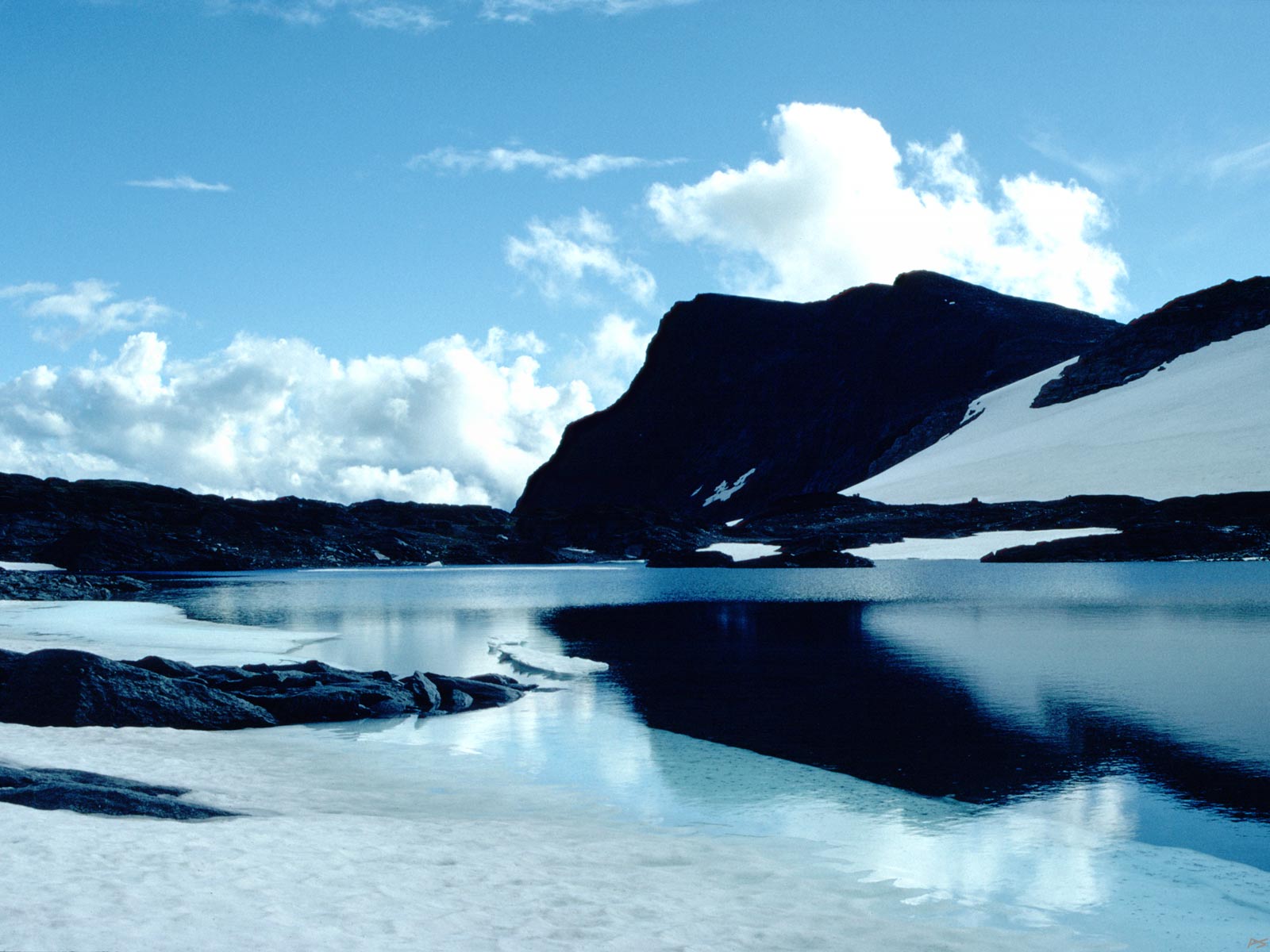
Blåhø (altitude 1671 m) and the lake (southern) Svarttjørn (altitude 1312 m), Trollheimen, near the end of June. This summer the ice was rather slow melting.
(1988)
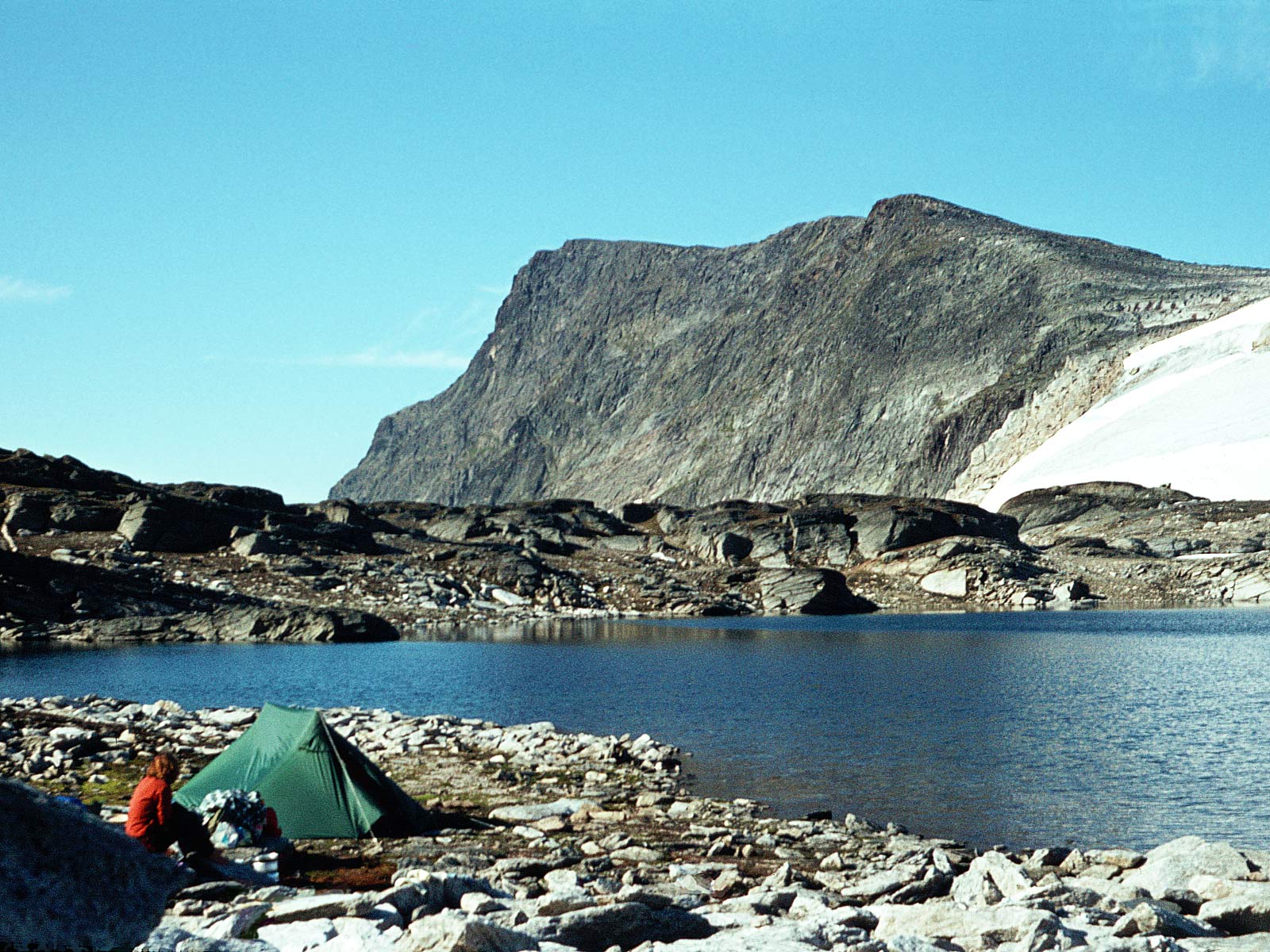
Blåhø in the morning light. The dew is still seen on the tent. Although July was unusually warm, the nights are very cold at this altitude when clouds don't stop the thermal radiation to "outer space". This morning I had my morning bath at the glacier to the right, after breaking up a couple of centimetres of new ice.
(1980)

Blåhø, end of September. The poles you see below are guides for this sometimes dangerous part of the winter skiing route between Gjevilvasshytta and Trollheimshytta. The closest poles were erected in 1990 to replace the ones from 1980, which were often covered by snow. Evidently the remnants of the latter were never removed.
(1990-09-24)
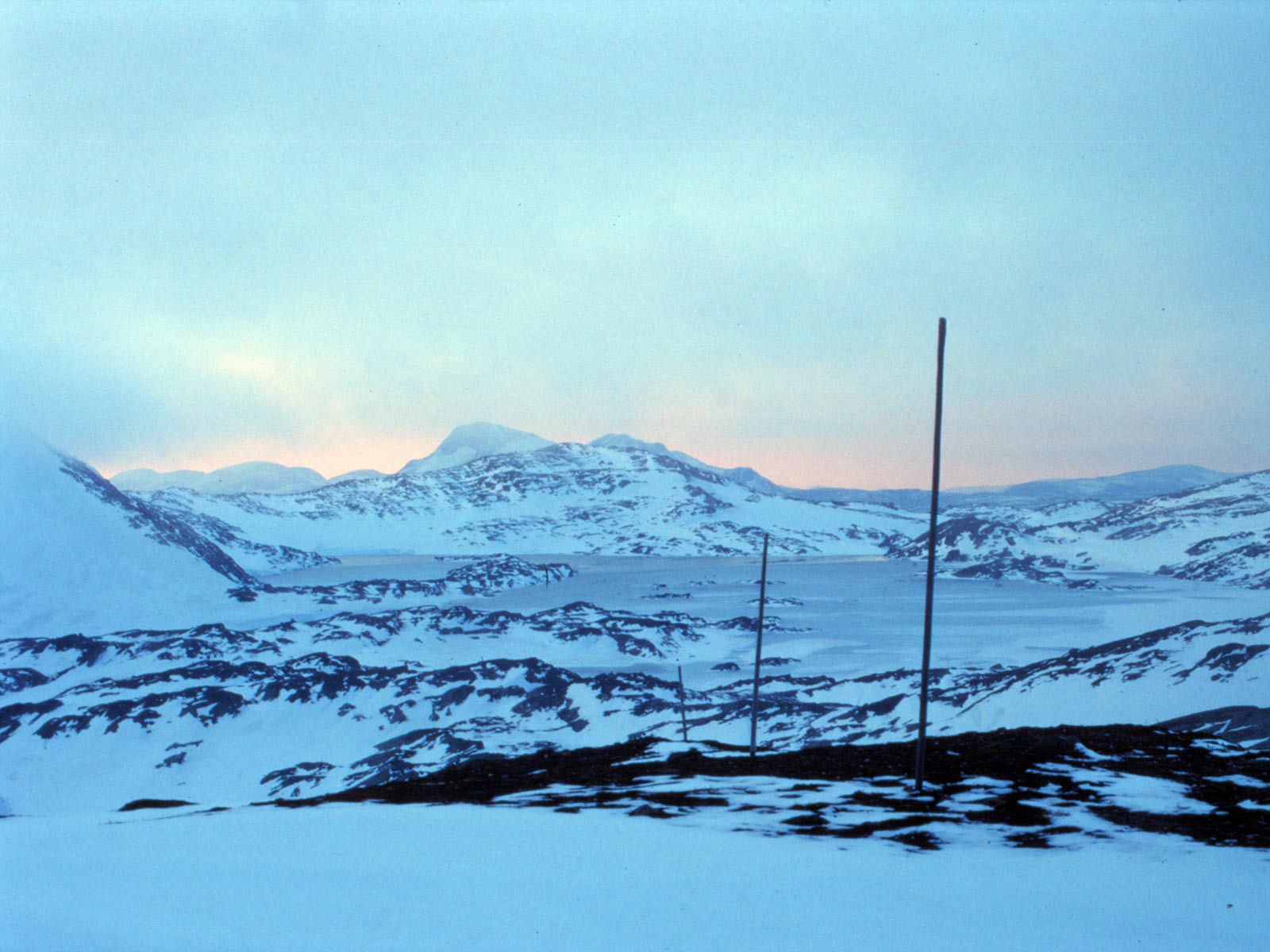
The middle of October. The slope to Blåhø starting at the left edge. Near the centre Snota 17 km away. The poles marks the winter route mentioned above.
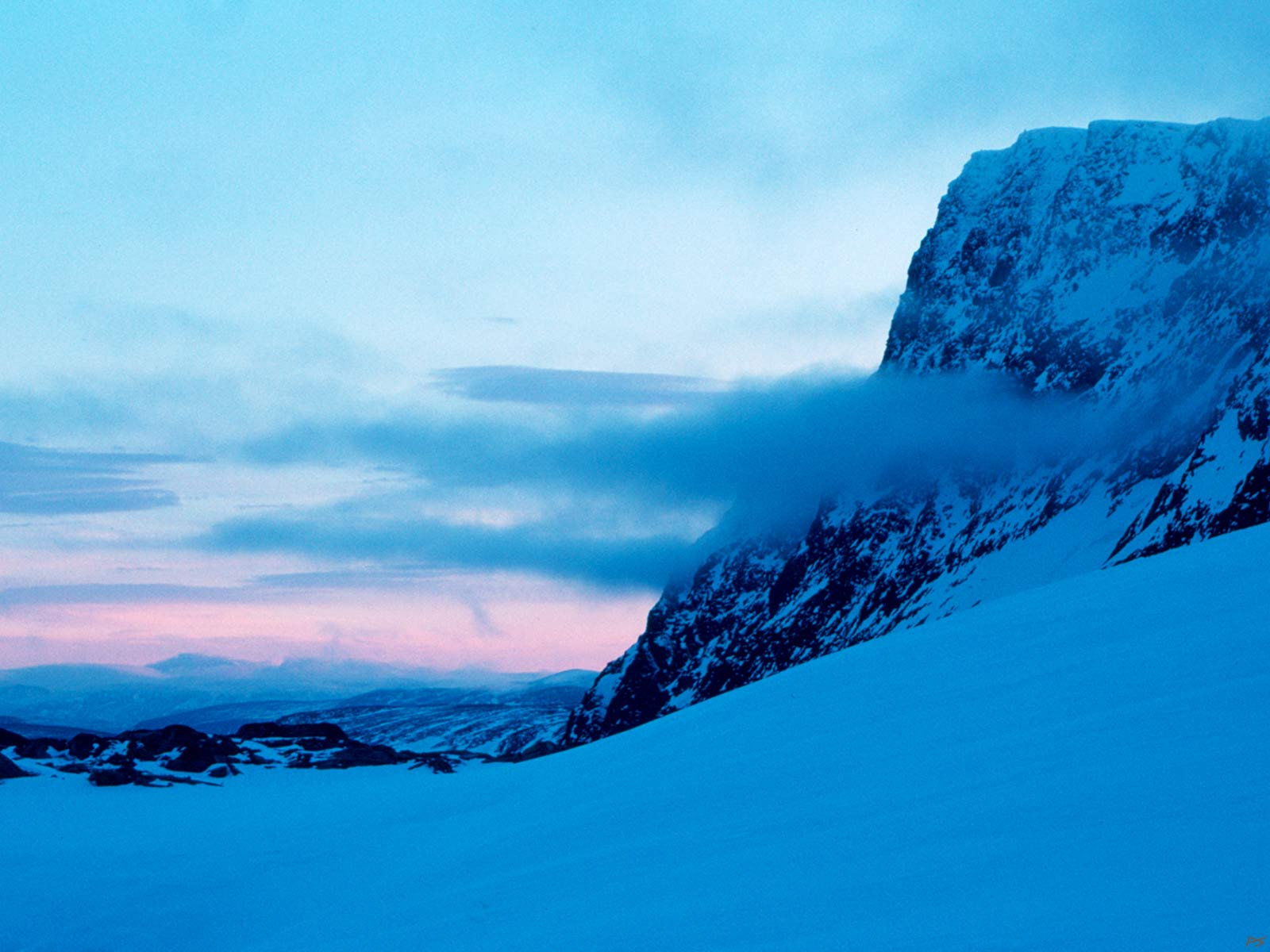
Blåhø in the middle of October at sunset.
(1989)

Blåhø to the right and below the little lake Blåhøtjønna. Middle of October.
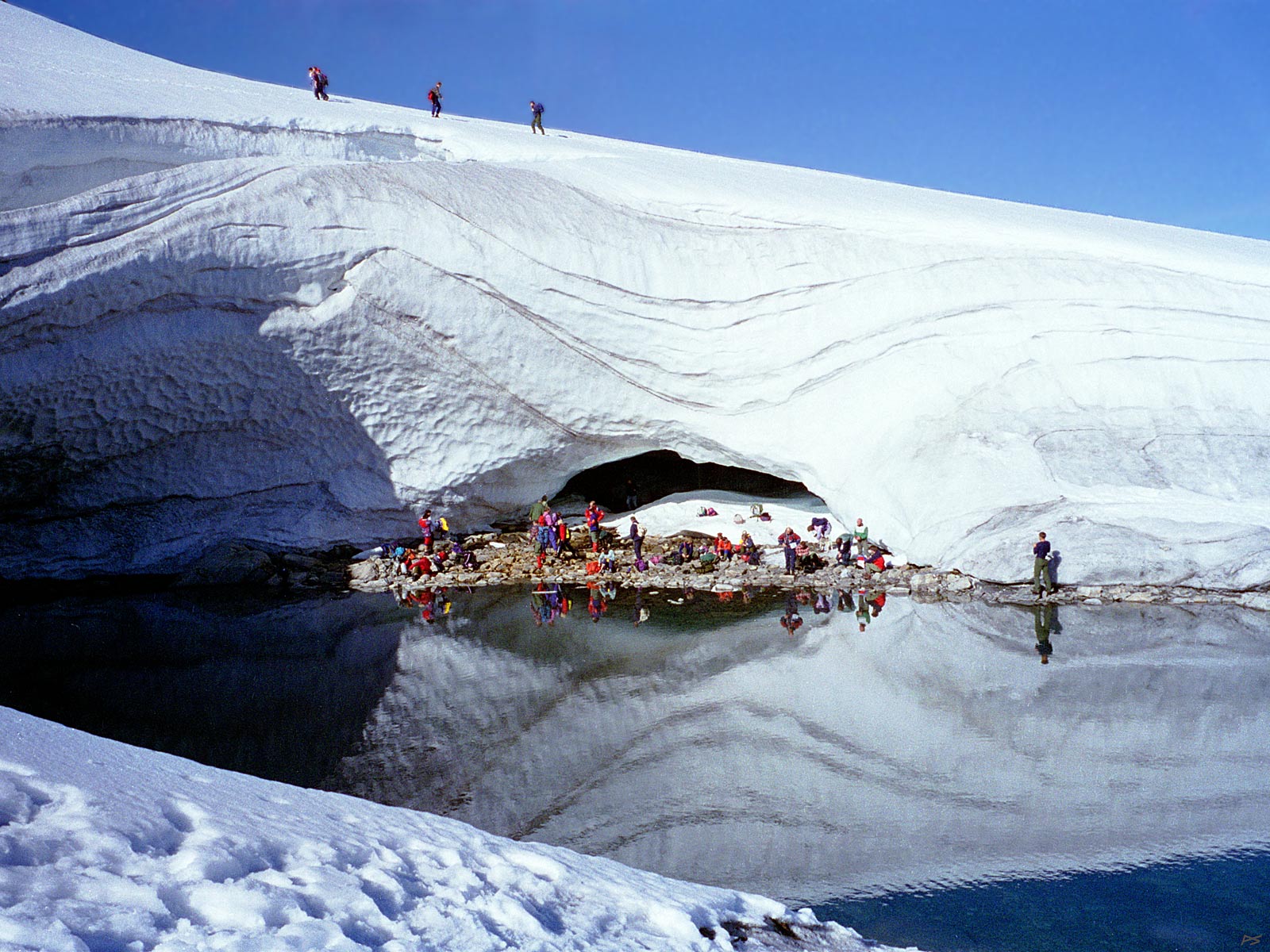
The three first images show a lake and a small glacier. The small brook from this lake flows under the glacier for about 250 metres and into the tiny lake shown here. During several years the ice above the brook melts to form a cave. After maybe 7–8 years the cave collapses and the process repeats. The entrances are, however, collapsed most of the time, but during some autumns following a warm summer it was possible to visit Blåsalen ('The Blue Hall') shown here, or Speilsalen ('The Mirror Hall') in the north end.
(1996-09-22)
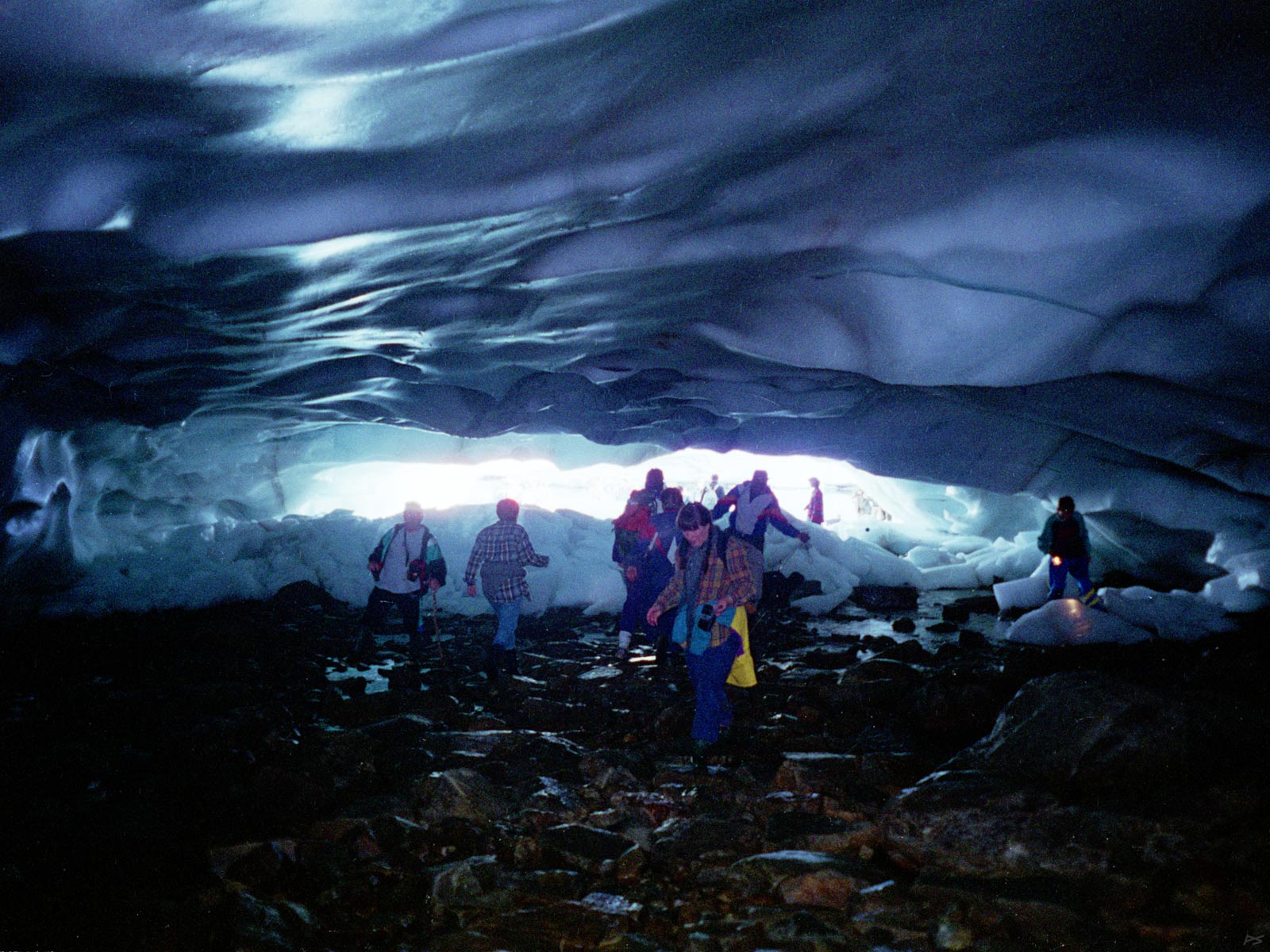
Inside Blåsalen, view towards the entrance. On this fine Sunday a lot of people drove to Gjevilvasshytta and hiked for 3 hours to enter the cave, and here are a few of them. Some younger ones had ventured further inwards where the roof was unpleasantly low and the floor as everywhere a shallow brook. Sometimes going through from one end to the other has been possible. Nobody did so that autumn because at the other end the glacier was too thin to hold a cave. Entering this cave is always a bit risky, heavy lumps of ice sometimes fall down from the roof.
(1996-09-22)
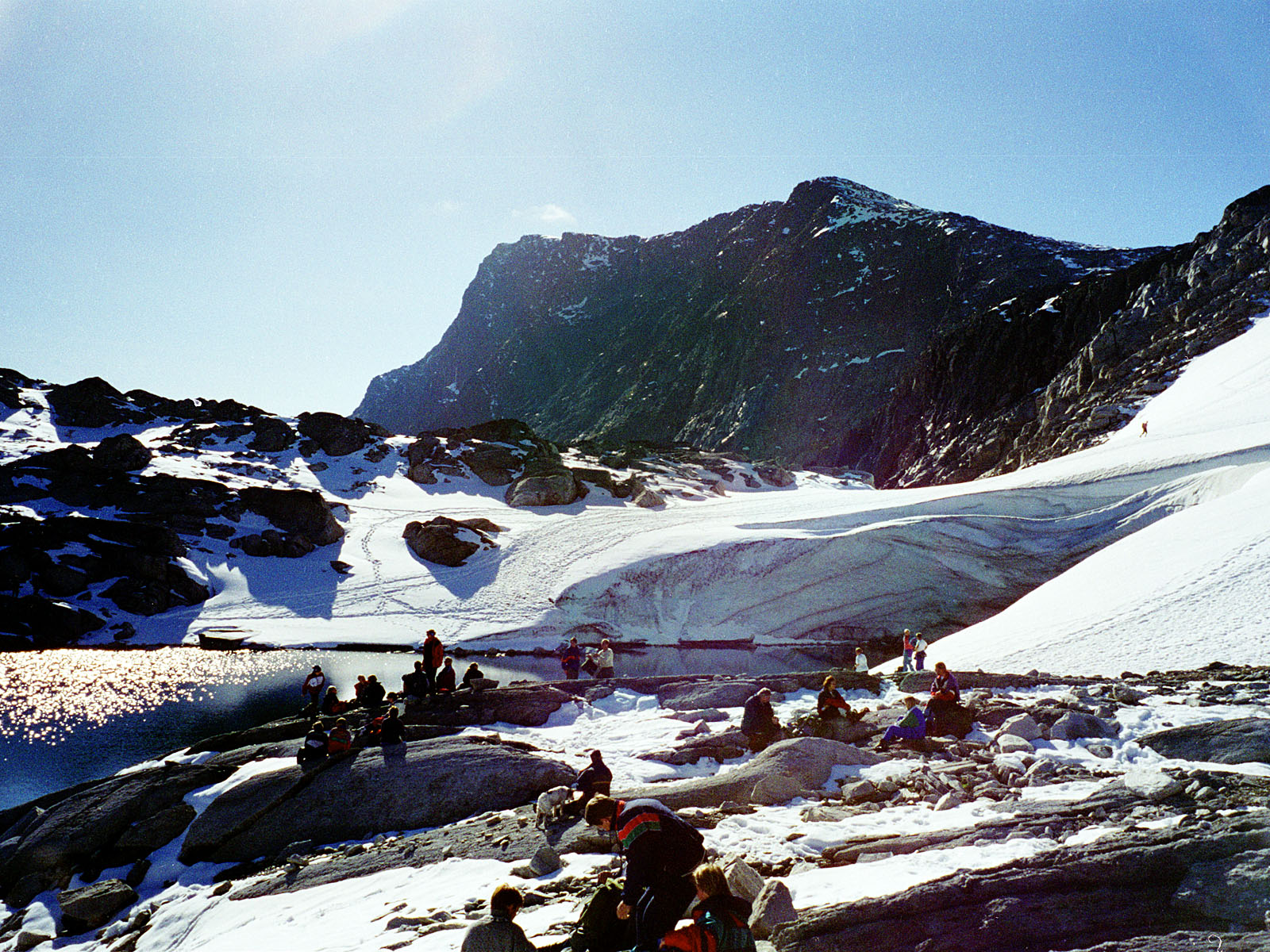
This late September day was sunny and relatively warm, even at an altitude of 1300 meter. There was a little new snow on the ground, but the sun had melted patches where people could enjoy their lunch. The entrance to the cave is seen in the right half of the picture, and behind that the top of Blåhø.
(1996-09-22)
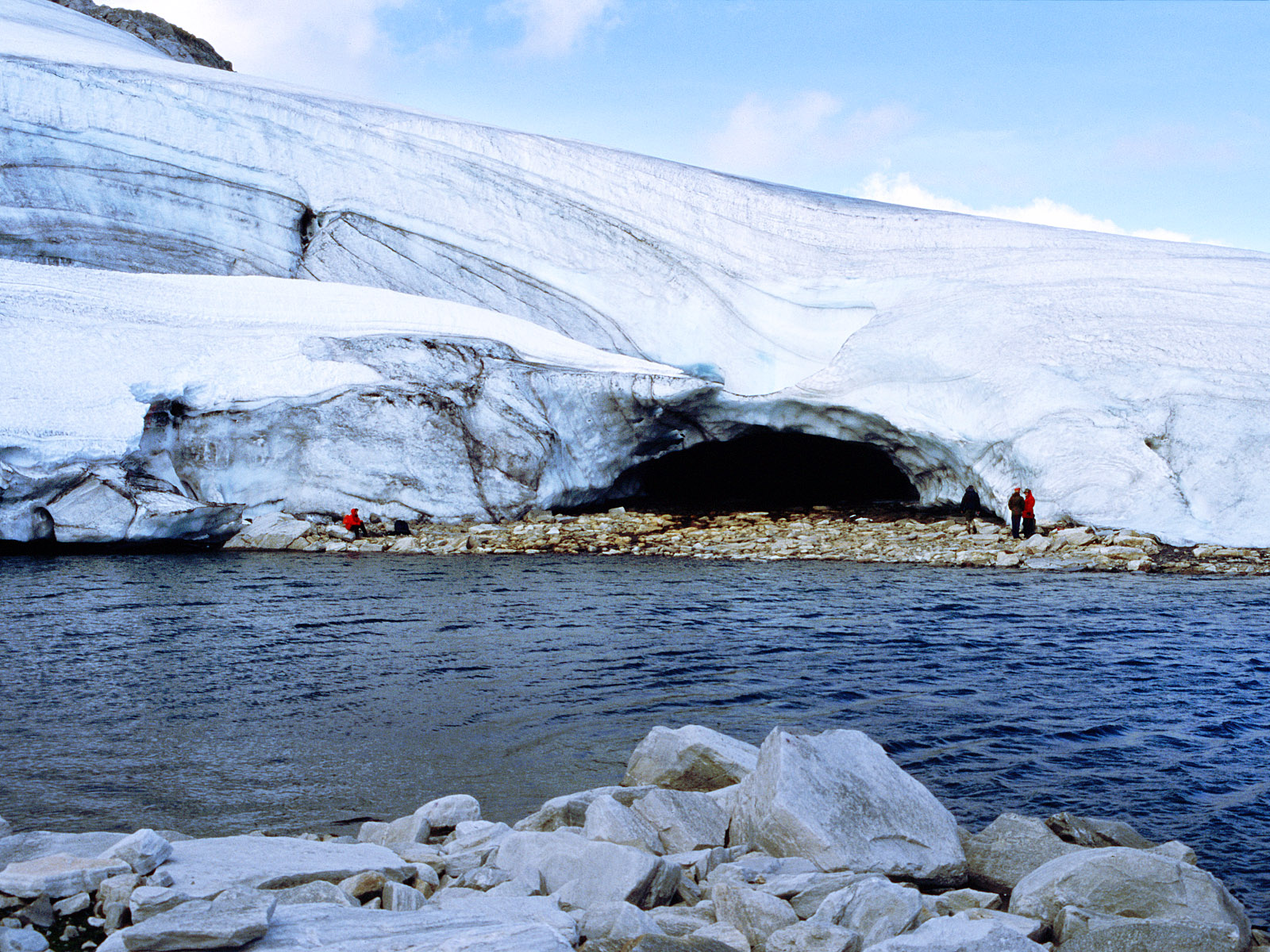
We visited the cave on a warm autumn day in 1999. Now the glacier was melting rapidly, water splashing down; a raincoat would have been needed for entering the cave. The top of the glacier was now blue and wet ice. If we had tried to walk on it, we might have ended up in the lake.
(1999)
Global Warming is hitting everywhere. In late autumn 2007 the cave collapsed under the new snow. This has happened before, but now the small glazier has become too small to keep the process going, so during the summers to come the small brook will flow under the blue sky.
A history lesson on a mountain top

July 1990 on the top of Blåhø. Somebody, evidently having caught the spirit of the shield inscription, had placed a small Norwegian flag on the cairn. Let me explain. Since 1814 Norway had been in union with Sweden with a Swedish king. Norwegians generally disliked this and nationalism was growing, culminating in 1905 when the union was broken up. The official Norwegian flag had the Union flag (mockingly called "the herring salad", shown below) in the upper hoist side square. In 1893, the year this cairn was built, the Norwegian Parliament (Stortinget) passed the first bill to make the pure Norwegian flag the official one, but the King vetoed it. In 1898 the bill was passed the third time, and the next year it became law notwithstanding the King's continued refusal to sign.
A copy of the shield inscription is shown. Here is a word by word translation, ignoring the rhymes:
This cairn
today we built [up]
here on Blåhø's high top,
it greets welcome
every honest Norwegian
who loves his people
and his fatherland,
who testifies that this land
solely is ours
and turns all foreign
interference away
3/8 93
[i.e. 3 August 1893]
[+names of 3 men 69½, 34 and 17 years old]

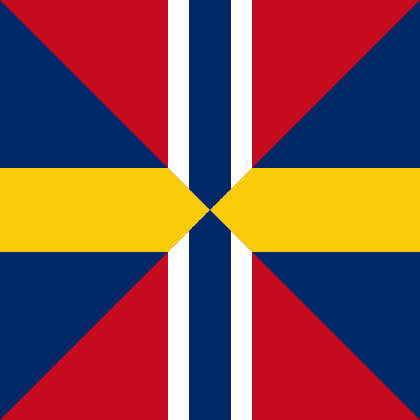

Swedish / Norwegian union flags 1844–1905/1899
with the "herring salad"
